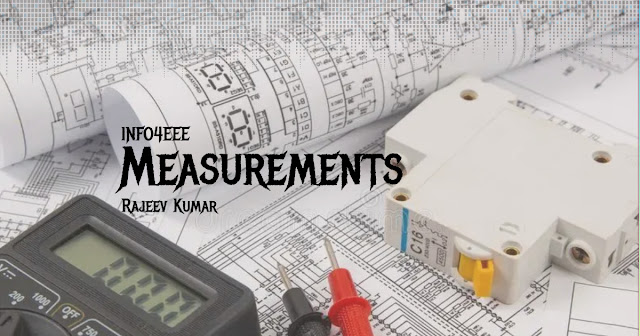Working principle of electrical measuring instruments
Operating Principle of Electrical Measuring Instruments
Electrical measuring instruments shows the measuring quantity when the pointer starts to move from zero position to measure value. A deflecting torque is required to move the pointer from its initial position and these deflecting torques produce by using the magnetic effects, thermal effects, chemical effects, electrostatic effects, and electromagnetic induction effects when the input is applied into the instruments.
Table-1: List of instruments with their operating principle
|
S.No. |
Instruments |
Effects |
Suitability
for type of measurement |
|
1 |
Ammeters, voltmeters, wattmeter, integrating meter and
other electrical instruments |
Magnetic effects |
Current, voltmeter, power and energy on both ac and dc
system |
|
2 |
Ammeter
and voltmeter |
Thermal effects |
Current
and voltage for both dc and ac system |
|
3 |
Integrating meter |
Chemical effects |
Measurement of dc ampere-hour |
|
4 |
Voltmeters
only |
Electrostatic effects |
Voltage
only on both ac and dc system |
|
5 |
Voltmeter, ammeters, wattmeter and energy meters |
Electromagnetic induction effects |
Measurement of voltage, current, power and energy in ac
system only |
1. Magnetic Effect: When a current carrying conductor is placed in uniform magnetic field, it experiences a force which causes to move it. This effect is mostly used in many instruments like moving iron attraction and repulsion type, permanent magnet moving coil instruments etc.
2. Thermal Effect: The current to be measured is passed through a small element which heats it to cause a rise in temperature which is converted to an e.mf. by a thermocouple attached to it. When two dissimilar metals are connected end to end to form a closed loop and the two junctions formed are maintained at different temperatures, then e.m.f. is induced which causes the flow of current through the closed-circuit which is called a thermocouple.
3. Electrostatic Effects: When two plates are charged, there is a force exerted between them, which moves one of the plates. This effect is used in electrostatic instruments which are normally voltmeters.
4. Induction Effects: When a non-magnetic conducting disc is placed in a magnetic field produced by electromagnets which are excited by alternating currents, an emf is induced in it. If a closed path is provided, there is a flow of current in the disc. The interaction between induced currents and the alternating magnetic fields prod a force on the disc which causes to move it. This mechanism is called an induction effect. This principle is mainly used in energy meters.
5. Hall Effect: If a bar of semiconducting material be placed in uniform magnetic field and if the bar carries current, there an emf, & produced between two edges of conductor. The magnitude of this emf depends on flux density of magnetic field. current passing through the conducting bar and hall effect co-efficient which is constant for a given semiconductor. This effect is mainly used in flux-meters.






Post a Comment